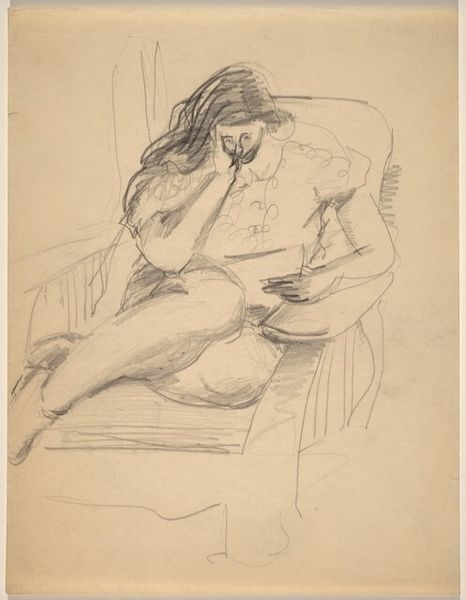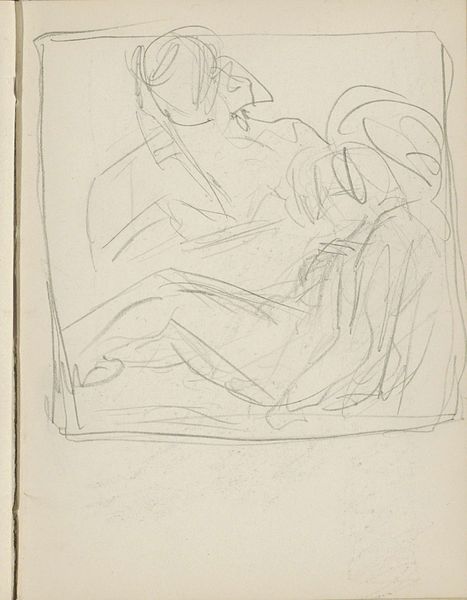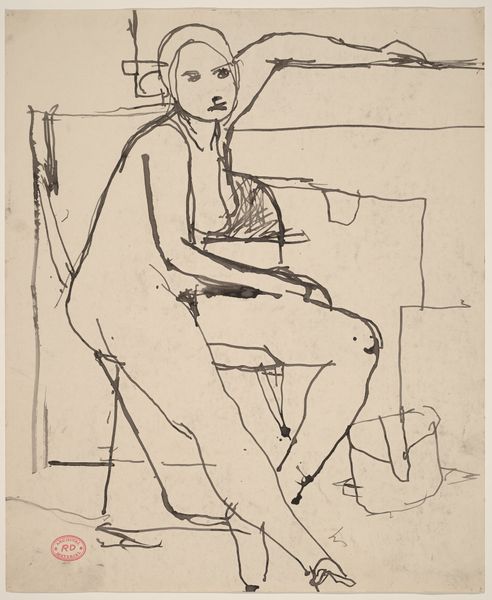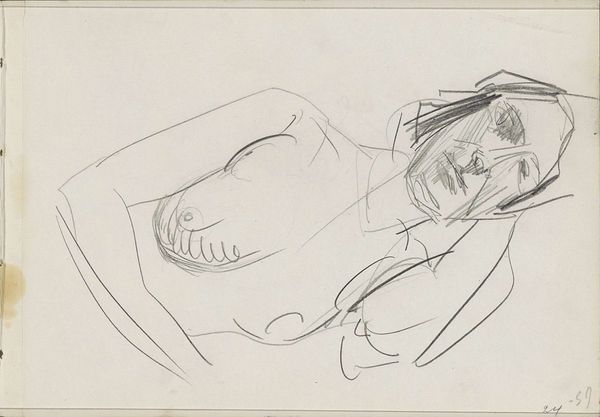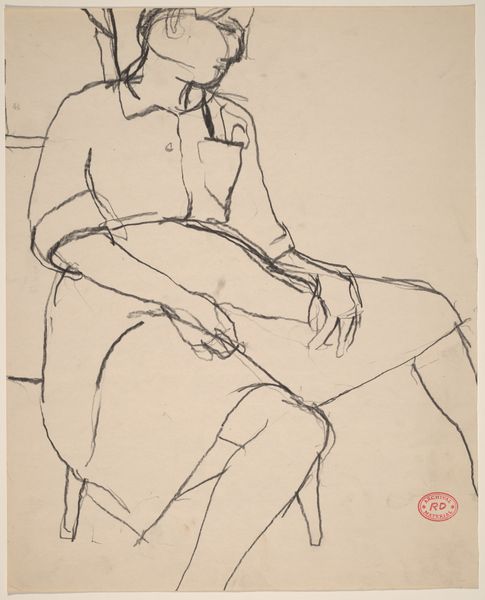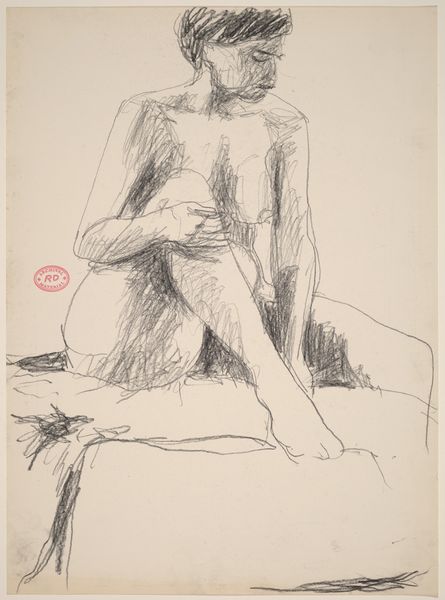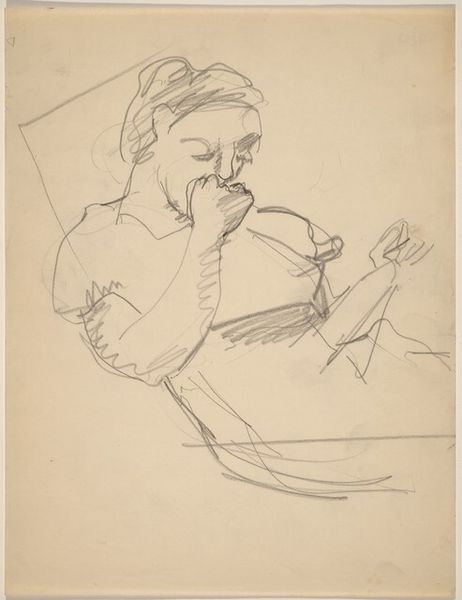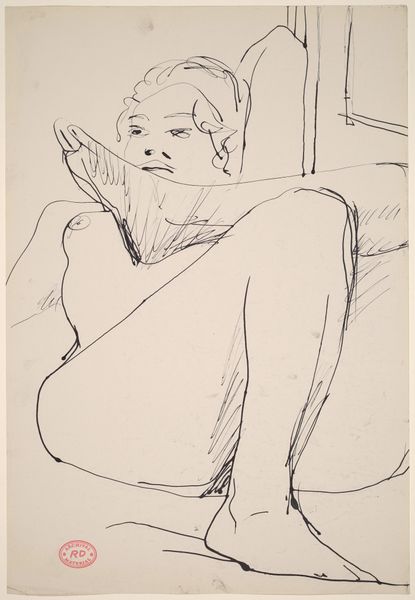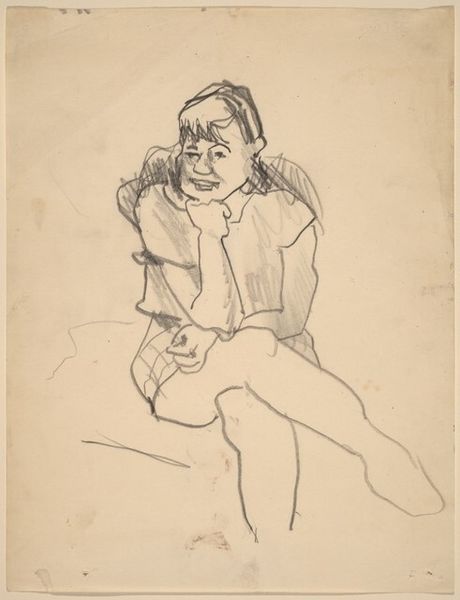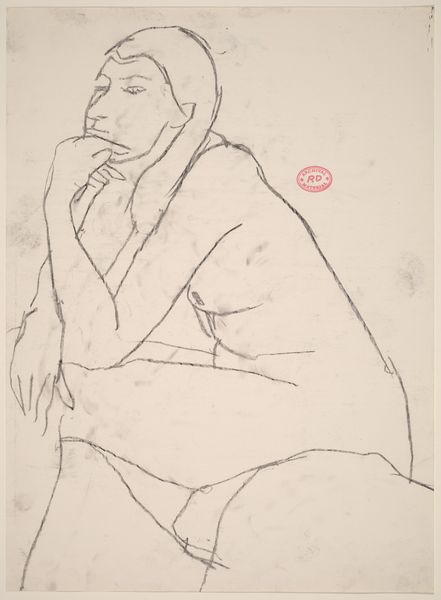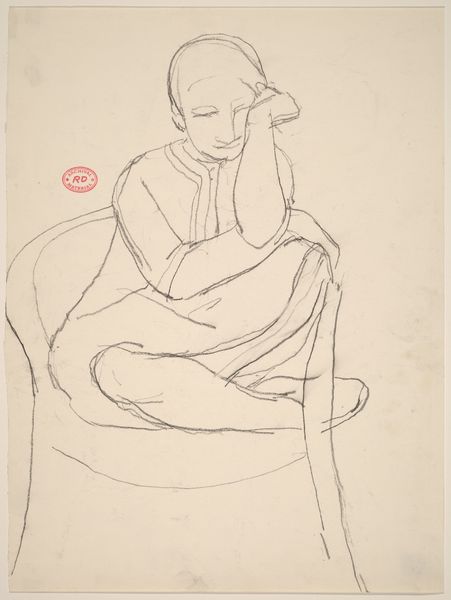
drawing, paper, ink
#
portrait
#
abstract-expressionism
#
drawing
#
figuration
#
paper
#
ink
#
portrait drawing
#
modernism
Dimensions: overall: 27.8 x 20 cm (10 15/16 x 7 7/8 in.)
Copyright: National Gallery of Art: CC0 1.0
Curator: This is Franz Kline's "Woman Seated in Armchair," a drawing executed in ink on paper in 1946. It gives us an insight into his early figurative work before his signature large-scale abstractions. Editor: It’s striking how few lines can suggest such a burdened mood. The asymmetry, especially the heavy, dark strokes around the eye, amplifies that feeling. Curator: Indeed. Look at the date. 1946. Post-war America was grappling with massive social changes. Many women who had entered the workforce during the war were now expected to return to domestic roles. Do you think that perhaps the drawing portrays some of this tension? Editor: Perhaps. The sharp angles in the clothing conflict with the woman's otherwise soft, rounded form and with the round shape in the lower part of the drawing. This adds to the internal drama you speak of, regardless of its potential social implications. Her head is quite prominent. It gives this whole drawing an almost top-heavy feeling. Curator: That reminds me of the rise of Existentialism that also began around this time. There was so much discourse exploring personal anxiety, especially relating to what it means to exist. The rapid rise of psychoanalysis must have influenced Kline's work, whether consciously or subconsciously, with artists exploring subjectivity and the inner life. Editor: The scratchy, nervous lines evoke the angst and uncertainty you described. Consider how Kline is essentially presenting the interior of this woman via abstraction, how the line doesn't merely denote an outline, but describes inner tension. Curator: Absolutely. And consider the historical context of Kline exhibiting alongside figures such as Pollock and de Kooning; Abstract Expressionism was considered distinctly American. They created these supposedly universal visual languages. We see this interest even within his figuration. Editor: The formal relationship between the lines is undeniably what holds the viewer's eye. I concede there may be cultural contexts worth exploring to find additional meaning, but I cannot forget that Kline made conscious artistic decisions while making this drawing. The essence of its effect resides, primarily, there. Curator: It’s in the confluence, I believe—the artist and artwork within its era, within a framework that gave both life and meaning. Editor: Ultimately, it’s these converging interpretations that grant it continued resonance, a mirror reflecting both our personal and shared history.
Comments
No comments
Be the first to comment and join the conversation on the ultimate creative platform.
